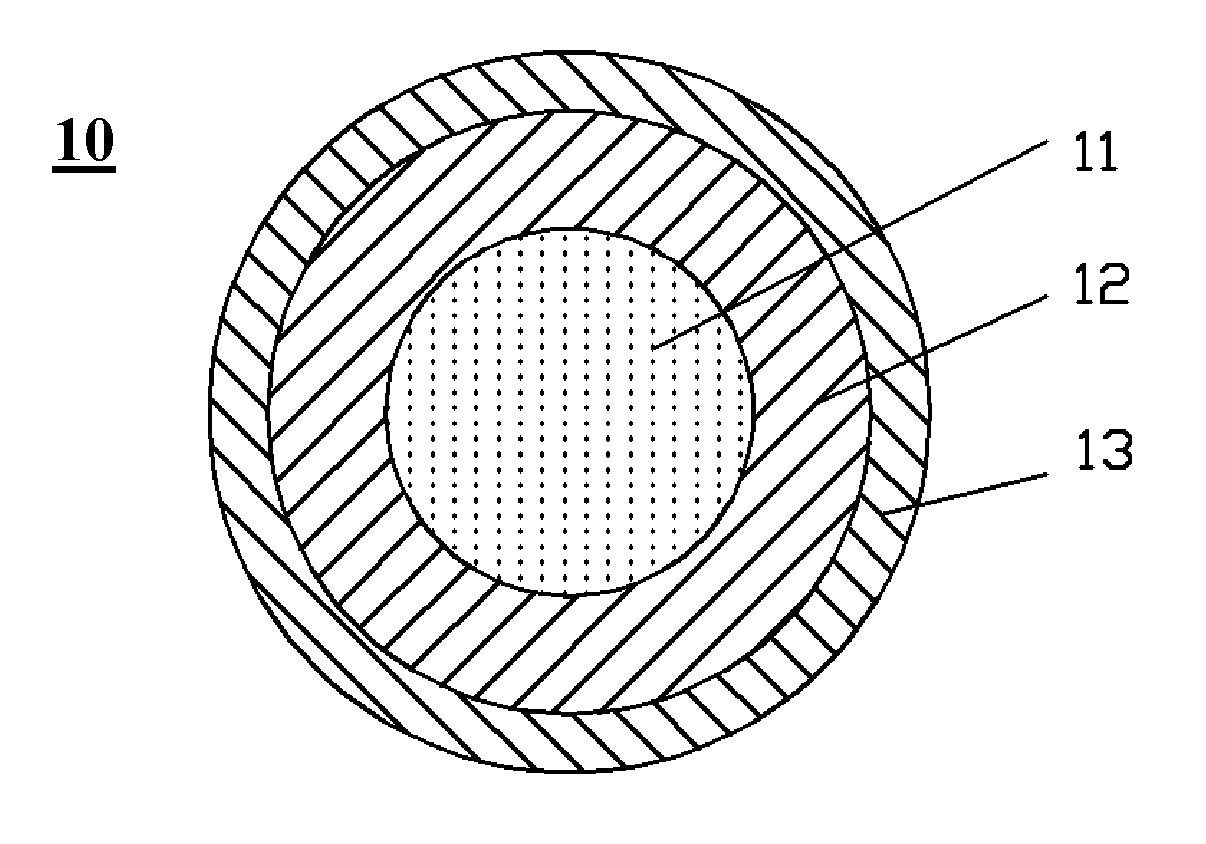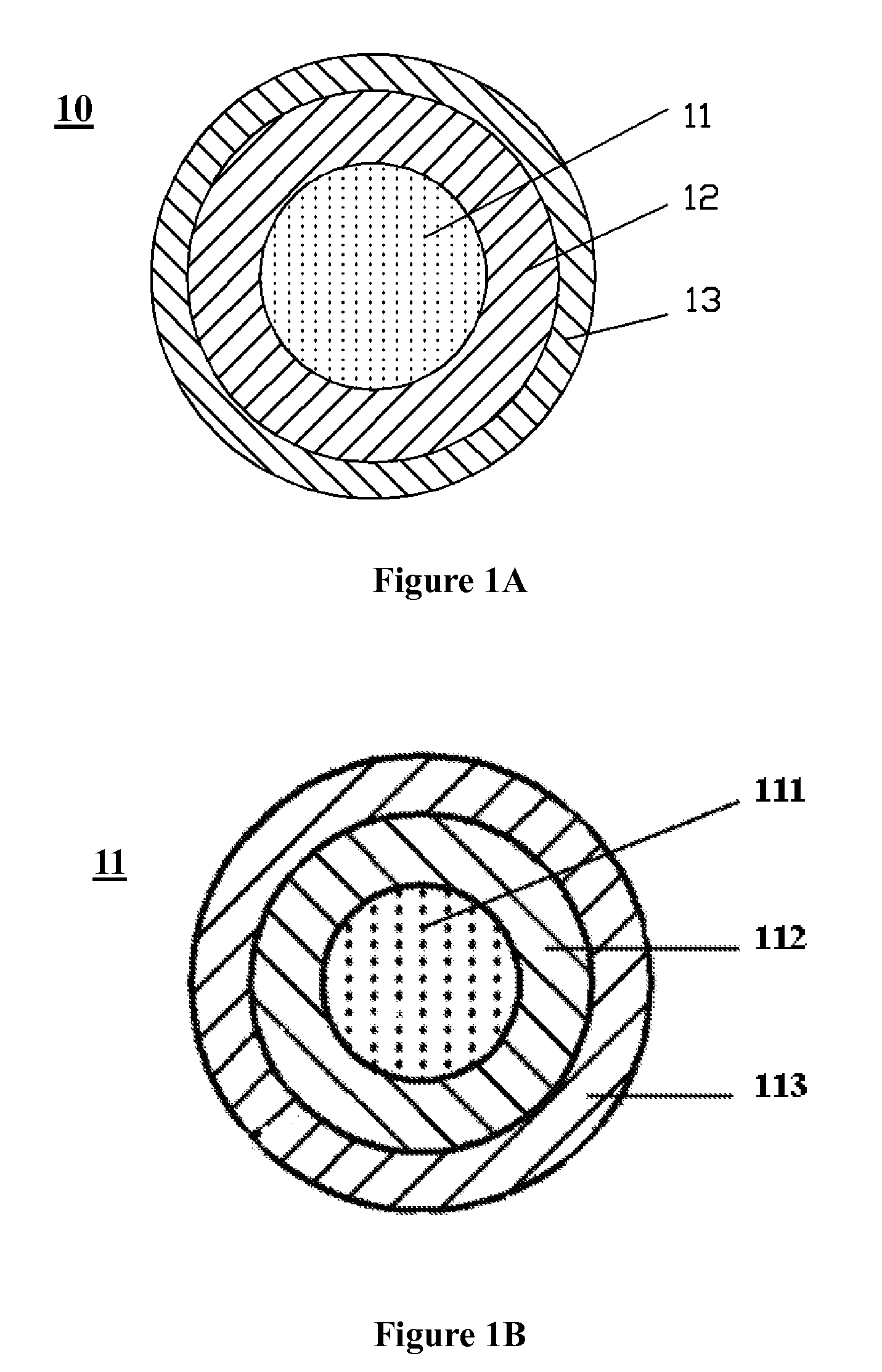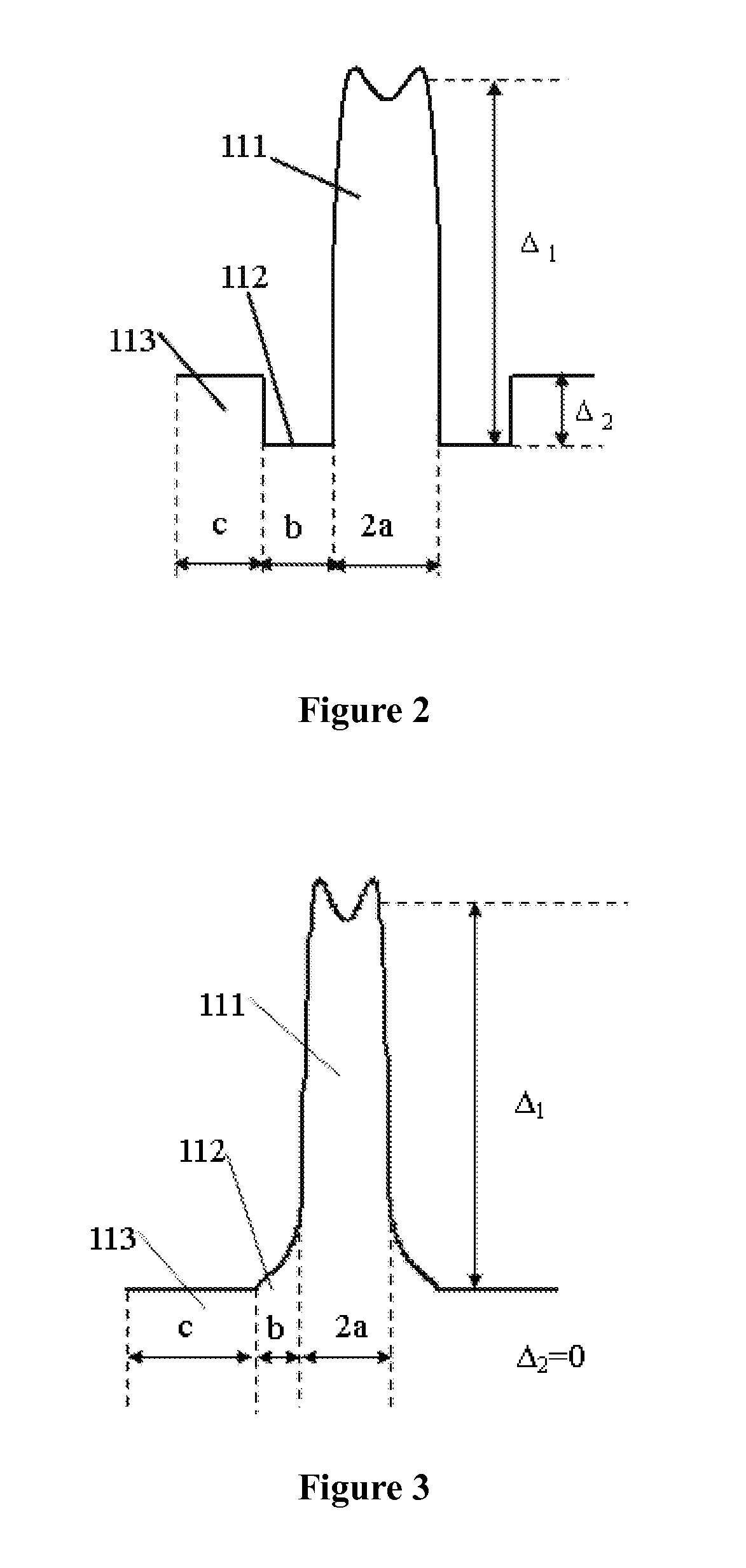Bend Insensitive Single Mode Fiber
a single-mode fiber and insensitive technology, applied in the field of fibers, can solve the problems of difficult to meet the requirements of transmission performance of fibers manufactured by using many of the methods mentioned above, difficult to meet the requirements of transmission performance, and relatively complex structure, etc., to achieve the effect of reducing manufacturing costs, reducing manufacturing tolerances, and increasing the bending resistance of fibers
- Summary
- Abstract
- Description
- Claims
- Application Information
AI Technical Summary
Benefits of technology
Problems solved by technology
Method used
Image
Examples
embodiment 1
[0060]Use the process of the VAD technology to manufacture the core rod and the OVD (or RIC) technology to manufacture the cladding so as to produce the fiber perform. During the deposition of the core layer 111, a certain quantity of GeCl4 is doped into the raw material of SiCl4 so that the refractive index difference of the core layer Δ1 is 0.0038 at 632.8 nm. During the deposition of the first cladding 112 and part of the second cladding 113, the pure SiCl4 raw material is used. By controlling the burner flow and the deposition time, the thickness of each layer shall be controlled as follows: the thickness of the core layer 111, first cladding 112 and second cladding 113 are 3.72 μm, 1.10 μm and 57.76 μm respectively. By controlling the drawing speed, the dripper temperature, etc, the diameter of the bare glass fiber shall be controlled as 125.15 μm; the thicknesses of the coating resins of the first resin protective layer 12 and the second resin protective layer 13 are respectiv...
embodiment 2
[0061]Use the process of the VAD technology to manufacture the core rod and the OVD (or RIC) technology to manufacture the outer cladding so as to produce the fiber perform. When in the deposition of the core layer 111, a certain quantity of GeCl4 is doped into the raw material of SiCl4 so that the refractive index difference of the core layer Δ1 is 0.0065 at 632.8 nm. When in the deposition of the first cladding 112, a certain quantity of CF4 is doped into the raw material of SiCl4 so that the refractive index difference Δ2 of the layer 112 is −0.0009 at 632.8 nm. During the deposition of the second cladding 113, the pure SiCl4 raw material is used. By controlling the burner flow and the deposition time, the thickness of each layer shall be controlled as follows: the thickness of the core layer 111, first cladding 112 and second cladding 113 are 2.96 μm, 1.69 μm and 57.87 μm. By controlling the drawing speed, the dripper temperature, etc, the diameter of the bare glass fiber shall ...
PUM
 Login to View More
Login to View More Abstract
Description
Claims
Application Information
 Login to View More
Login to View More - R&D
- Intellectual Property
- Life Sciences
- Materials
- Tech Scout
- Unparalleled Data Quality
- Higher Quality Content
- 60% Fewer Hallucinations
Browse by: Latest US Patents, China's latest patents, Technical Efficacy Thesaurus, Application Domain, Technology Topic, Popular Technical Reports.
© 2025 PatSnap. All rights reserved.Legal|Privacy policy|Modern Slavery Act Transparency Statement|Sitemap|About US| Contact US: help@patsnap.com



